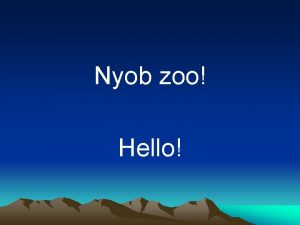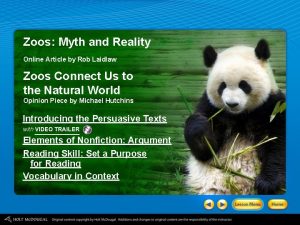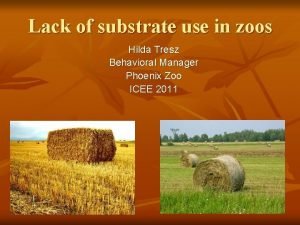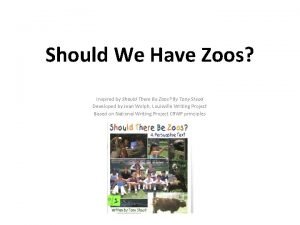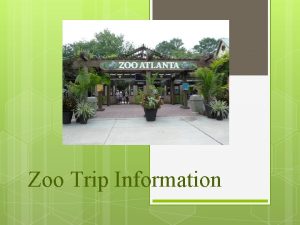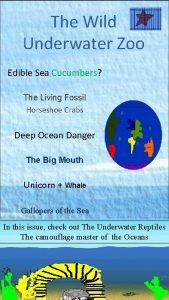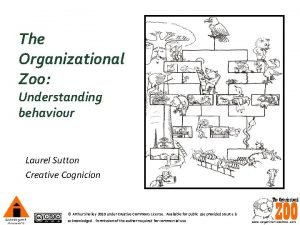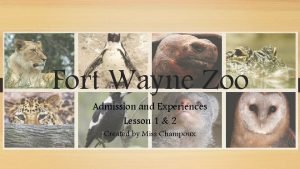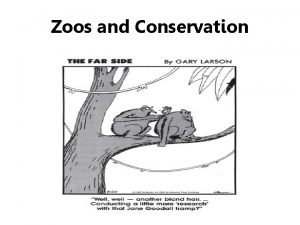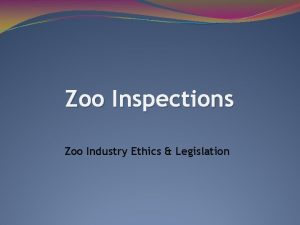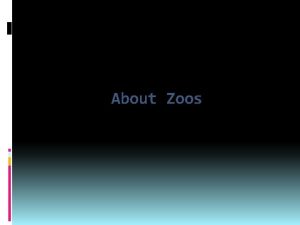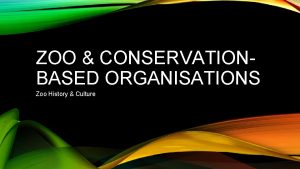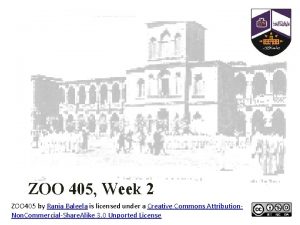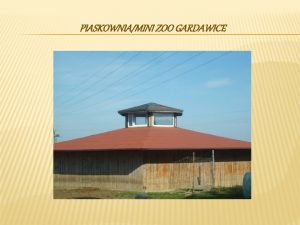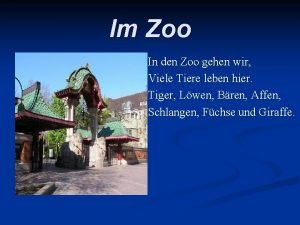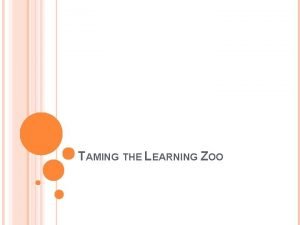Herpetological History of Zoos and Aquaria Zoo History
















- Slides: 16

Herpetological History of Zoos and Aquaria Zoo History & Culture

What is a herptile? • Word used to describe reptiles and amphibians. • Not a biologically valid term. • What are the differences between amphibians and reptiles?

Barriers to keeping of herptiles • Preferred optimal temperature • Humidity • Water requirements • Sociality • Stereotypy • Breeding triggers

First records of herptiles in captivity • Crocodylia – Ancient Egyptian priests held sacred crocodile feedings, and there is evidence of crocodile mummies (Murphy, 2007). • Already well distributed in zoos by mid-1800 s – Berlin zoo reports housing 8 species in its collection by the year 1860.

First records of herptiles in captivity • Chelonia – giant tortoises were common on tropical and subtropical islands until the 1600 s. • Many species arrived into the UK as remains of specimens.

First zoological collection • Reptiles were housed in zoos long predating the first reptile house. • Early records for the Museum du Jardin des Plantes and ZSL London Zoo indicate the importation of large chelonian, snakes and crocodiles into the collections. • Survival was typically poor.

The ‘Reptile House’ • First reptile house opened at London Zoo in 1849 – first dedicated reptile building in any of the world’s zoos! • ZSL currently use their third incarnation of the reptile house…

Interpretation

Evolution • Understanding and interest in reptile behaviour and biology developed. • Several case study species highlighted the need for conservation of reptiles.

Venomous species

Impact of CITES

Morphs

Modern collections containing herptiles • Rise in interest in keeping amphibians in line with the chytrid crisis. • Development of ‘amphi-pods’ • Movement away from taxonomic organisation to biogeographic exhibitry

Conclusions

Further reading • Mc. Callum, M. L. , & Mc. Callum, J. L. (2006). Publication trends of natural history and field studies in herpetology. Herpetological Conservation and Biology, 1(1), 63 -68.

Questions? Emerald tree boa (Corallus caninus)
 Biodiversity introduction
Biodiversity introduction Aquaria moston
Aquaria moston Hello in hmong
Hello in hmong Zoos connect us to the natural world
Zoos connect us to the natural world Zoos myth and reality answers
Zoos myth and reality answers Should there be zoos by tony stead read aloud
Should there be zoos by tony stead read aloud Zoo safety rules
Zoo safety rules I nie krępuj się zupełnie twe życzenie każde spełnię
I nie krępuj się zupełnie twe życzenie każde spełnię Deep underwater
Deep underwater The professional development group
The professional development group Zoological riddles challenge
Zoological riddles challenge Pep zoo zip
Pep zoo zip Toy plural
Toy plural National zoo policy
National zoo policy Zoo by edward d. hoch analysis
Zoo by edward d. hoch analysis Fort wayne zoo prices
Fort wayne zoo prices The learning zoo the woodlands
The learning zoo the woodlands


